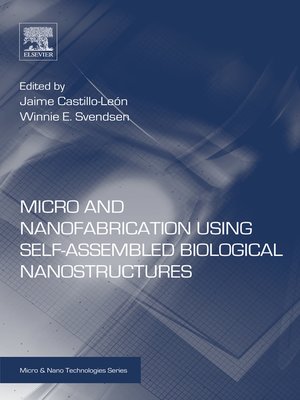Micro and Nanofabrication Using Self-Assembled Biological Nanostructures
ebook ∣ Micro and Nano Technologies
By Jaime Castillo-León

Sign up to save your library
With an OverDrive account, you can save your favorite libraries for at-a-glance information about availability. Find out more about OverDrive accounts.
Find this title in Libby, the library reading app by OverDrive.



Search for a digital library with this title
Title found at these libraries:
| Library Name | Distance |
|---|---|
| Loading... |
Self-assembled nanostructures based on peptides and proteins have been investigated and presented as biomaterials with an impressive potential for a broad range of applications such as microfabrication, biosensing platforms, drug delivery systems, bioelectronics and tissue reparation. Through self-assembly peptides can give rise to a range of well-defined nanostructures such as nanotubes, nanofibers, nanoparticles, nanotapes, gels and nanorods. However, there are challenges when trying to integrate these biological nanostructures in the development of sensing devices or drug-delivery systems – challenges such as controlling the size during synthesis, the stability in liquid environments and manipulation.
In "Micro and Nanofabrication Using Self-assembled Biological Nanostructures" the options and challenges when using self-assembled peptide nanostructures in micro and nanofabrication are discussed. The publication covers different ways to manipulate, deposit and immobilize on specific locations these biological nanostructures in order to use them in the fabrication of new structures or as part of biosensing platforms. Examples where researchers used biological nanostructures for those types of applications are provided. Finally, future applications are discussed as well as parameters to accelerate and expand the use of these biological building blocks in nano- and micro-fabrication processes by taking advantage of their impressive properties such as low-cost and short synthesis time.







